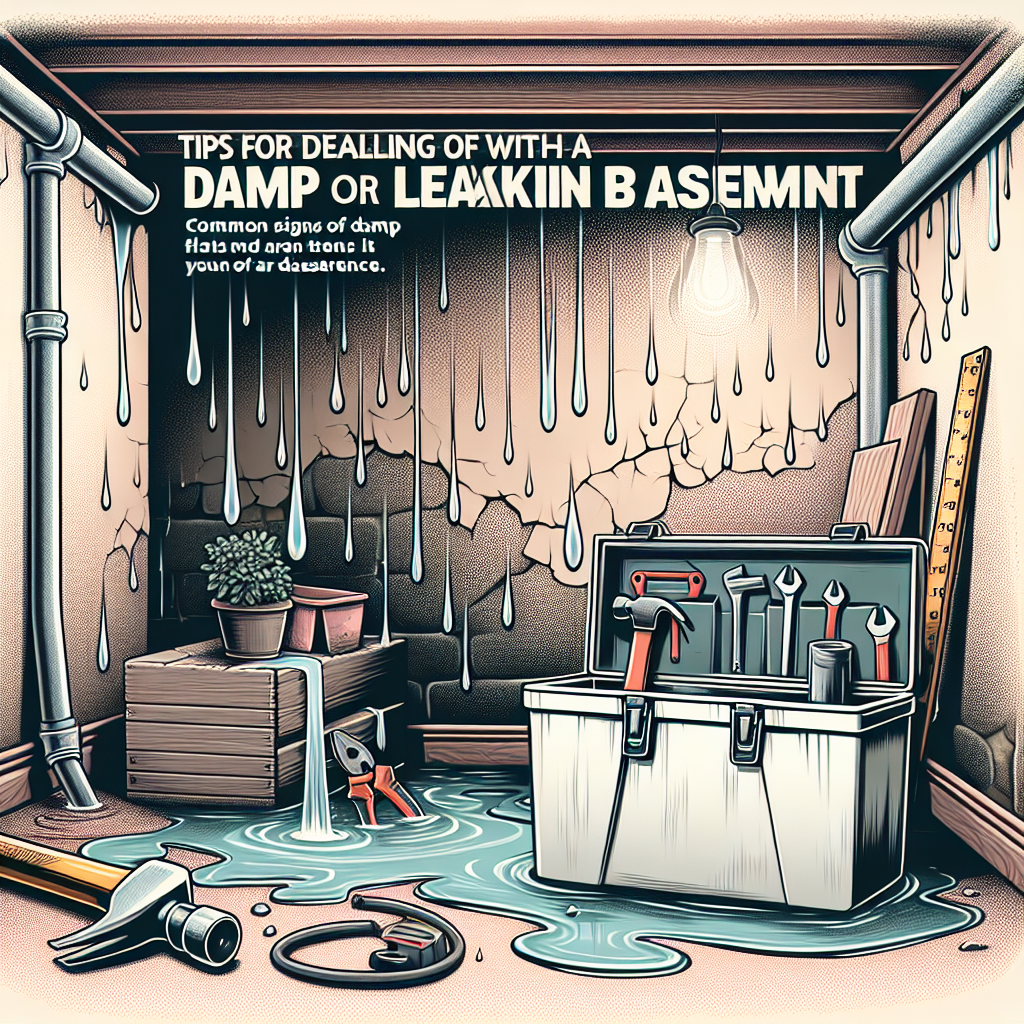Owning a home is a joyful experience, but when you discover a damp or leaky basement, it can quickly turn into a nightmare. A wet basement not only presents challenges for storage and living space but can also pose health risks due to mold growth. In this article, we’ll explore practical tips for dealing with moisture issues in your basement, ensuring your home remains a safe and comfortable haven.
Understanding the Causes of a Damp Basement
Before diving into solutions, it’s crucial to understand why your basement may be leaking or damp. Common causes include:
- Poor Drainage Systems: If your gutters aren’t directing rainwater away from your home, it could trickle down to your foundation.
- Soil Saturation: Heavy rains can saturate the soil around your foundation, leading to excess water pressure.
- Cracks in Walls and Foundations: Over time, wear and tear can create openings that allow water to seep in.
- High Humidity Levels: Sometimes, it’s not actual leaks but excess humidity that leads to a damp feeling.
Identifying the cause is the first step in taking effective action.
Essential Steps to Take Immediately
If you discover dampness or leaks in your basement, take these immediate actions:
1. Assess the Situation
Inspect the severity of the dampness—how extensive is the issue? Are you dealing with minor moisture or significant leaks? Understanding the scope will help you decide your next steps.
2. Clear the Area
Move any furniture, boxes, or personal items away from the damp spots. This prevents damage and facilitates easy access for any repairs you may need to undertake.
3. Dry the Basement
Quickly drying out the basement can prevent mold growth. Use a dehumidifier, fans, or even open windows if weather permits. Ensure the space is well-ventilated.
Long-Term Solutions to Prevent Future Dampness
Once you’ve managed the immediate issues, it’s essential to implement long-term solutions to keep your basement dry.
1. Improve Drainage Systems
Ensure that your gutters and downspouts are clear and are directing water at least six feet away from the foundation. Consider installing extensions if necessary. You might also want to install a French drain or a sump pump to handle excess groundwater.
2. Seal Cracks and Gaps
Inspect your foundation walls for any visible cracks. Use hydraulic cement or masonry sealant to repair these openings. For larger cracks, consider consulting a professional.
3. Waterproofing Solutions
Invest in waterproofing solutions, such as:
- Exterior Waterproofing: This involves excavating the foundation and applying a waterproofing membrane.
- Interior Waterproofing: This is often a less invasive method that can include applying sealant to walls and floors or installing a drainage system.
4. Manage Humidity
Keep humidity levels in check by utilizing a dehumidifier. Ideally, basement humidity levels should stay between 30-50%. Regularly check these levels, especially during rainy seasons.
Regular Maintenance: Keeping Your Basement Dry
Preventing dampness in your basement is an ongoing endeavor. Keep a schedule for regular maintenance:
1. Seasonal Inspections
Inspect your gutters, drainage systems, and foundation at least twice a year. Look for signs of wear, such as clogged drains or damaged gutters.
2. Landscaping Considerations
Ensure the ground around your foundation slopes away from your home. Consider installing swales to help direct water away from your basement.
3. Monitor Indoor Air Quality
Use moisture absorbers and keep an eye on humidity levels. Regularly change the air filter in your HVAC system to ensure optimal performance.
When to Call in the Professionals
If your basement issues are severe or beyond your capacity to handle, don’t hesitate to contact a professional. Mold remediation specialists, waterproofing experts, and structural engineers can provide invaluable help in restoring your basement to a safe and dry condition.
Conclusion: Taking Control of Your Damp Basement
Dealing with a damp or leaky basement can be daunting, but with the right strategies, you can transform this potential disaster into a manageable problem. By assessing the situation, addressing immediate issues, and implementing long-term solutions, you’ll be well on your way to keeping your basement dry and your home healthy. Remember, a proactive approach is key to preserving your home’s value and your family’s well-being. Take action today, and enjoy peace of mind in your basement tomorrow!


